by ROBERT MAURER, Ph.D.



who lives life one joyful nionient at a time thank you for your love and inspiration
"Small things with great love.... It is not how much we do, but how much love we put into the doing. And it is not how much we give, but how much love we put into the giving. To God there is nothing small."
-Mother Theresa
......................................................1
One Small Step
CHAPTER ......................................21
Why Kaizen Works
Ask Small Questions
Think Small Thoughts
Take Small Actions
CHAPTER ...................................... 119
Solve Small Problems
CHAPTER ...................................... 145
Bestow Small Rewards
CHAPTER .........................................159
Identify Small Moments
Kaizen for Life
....................................182
Japanese corporations have long used the gentle technique of kaizen to achieve their business goals and maintain excellence. Now this elegant strategy can help you realize your personal dreams.
 ost of psychology and medicine is devoted to studying why people get sick or don't function well in life. But throughout my career as a psychologist, I've always been intrigued by the opposite of failure. When a dieter loses ten pounds and keeps it off, I want to know why. If a person finds love after years of unsatisfying relationships, I'm curious about the strategies that made this happiness possible. When a corporation stays on top of its game for fifty years, I want to understand the human decisions behind the success. And so there have been two questions that have occupied my professional life:
ost of psychology and medicine is devoted to studying why people get sick or don't function well in life. But throughout my career as a psychologist, I've always been intrigued by the opposite of failure. When a dieter loses ten pounds and keeps it off, I want to know why. If a person finds love after years of unsatisfying relationships, I'm curious about the strategies that made this happiness possible. When a corporation stays on top of its game for fifty years, I want to understand the human decisions behind the success. And so there have been two questions that have occupied my professional life:
How do people succeed?
How do successful people stay successful?
Of course, there are as many ways to achieve success as there are successful people. But over the course of twenty-two years in practice, I've had the satisfaction of watching countless clients use an unusual method to create lasting change. They've applied the same simple principles to improve their lives in just about every way. They've lost weight (and kept it off); begun an exercise program (and stuck with it); kicked addictions (for good); created strong relationships (the kind that last); become organized (without sliding when things get hectic); and improved their careers (and continued to do so, long after their performance reports are filed).
If you'd like to make a change-one that sticks-I hope you'll read on. This method is something of an open secret, one that's circulated among Japanese businesses for decades and is used daily by private citizens across the globe. It is a natural, graceful technique for achieving goals and maintaining excellence. It can slip into even the tightest of schedules. And in this book, I'll share this strategy with you.
But first, I want you to meet Julie.
JULIE SAT IN THE EXAMINING ROOM, her eyes cast downward. She had come to UCLA's medical center for help with high blood pressure and fatigue, but the familypractice resident and I could see that much more was going on. Julie was a divorced mother of two, by her own admission a little depressed and more than a little overwhelmed. Her support system was shaky at best, and she was just barely holding on to her job.
The young doctor and I were concerned about Julie's long-term health. Her weight (she was carrying more than thirty extra pounds) and soaring stress level put her at increased risk for diabetes, hypertension, heart disease, and deeper depression. It was clear that if Julie did not make some changes, she was headed down a spiral of disease and despair.
We knew a cheap, proven way to help Julie, and it wasn't a bottle of pills or years in psychotherapy. If you read the papers or watch the news, you can probably guess what I'm talking about: exercise. Regular physical activity could improve nearly all of Julie's health problems, give her more stamina to sustain her through her grueling days, and boost her spirits.
Once, I might have offered this free and effective treatment with all the zeal of a new convert. Go jogging! Ride a bike! Rent an aerobics video! I might have said. Give up your lunch break, wake up an hour earlier if you have to, but just get up and make that commitment to your health five times a week! But when I looked at the dark circles under Julie's eyes, my heart sank. We'd probably told hundreds of patients to exercise, but very few of them made it a regular habit. They found it too time-consuming, too sweaty, too much effort. I believe that most of them were also afraid of breaking out of their comfortable ruts, although not all of the patients were aware of this fear. And here sat Julie, who worked almost constantly just to keep her kids housed and clean and fed. Her only solace was relaxing for a half-hour or so on the couch most evenings. I could predict what would happen: The doctor would tell her to exercise, Julie would feel both misunderstood ("How am I going to find time to work out? You don't understand me at all!") and guilty. The resident physician would feel frustrated to see her advice ignored one more time-and possibly start to become cynical, as so many hopeful young doctors eventually do. What could I do to break this sad cycle?
Charging Uphill: Innovation
 hen people want to change, they usually turn first to the strategy of innovation. Although you may usually think of innovation as a type of creative breakthrough, I'm using the term here as it's defined by business schools, where the vocabulary of success and change is highly specific. According to this definition, innovation is a drastic process of change. Ideally, it occurs in a very short period of time, yielding a dramatic turnaround. Innovation is fast and big and flashy; it reaches for the largest result in the smallest amount of time.
hen people want to change, they usually turn first to the strategy of innovation. Although you may usually think of innovation as a type of creative breakthrough, I'm using the term here as it's defined by business schools, where the vocabulary of success and change is highly specific. According to this definition, innovation is a drastic process of change. Ideally, it occurs in a very short period of time, yielding a dramatic turnaround. Innovation is fast and big and flashy; it reaches for the largest result in the smallest amount of time.

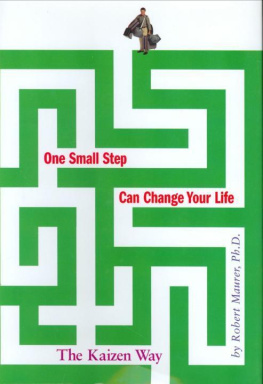


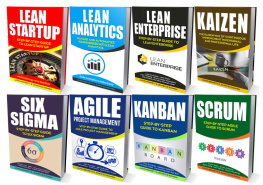
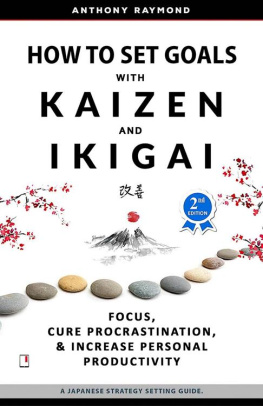
![Masaaki Imai - Strategic Kaizen(tm) Using Flow, Synchronization, and Leveling [Fsl(tm)] Assessment to Measure and Strengthen Operational Performance](/uploads/posts/book/267064/thumbs/masaaki-imai-strategic-kaizen-tm-using-flow.jpg)
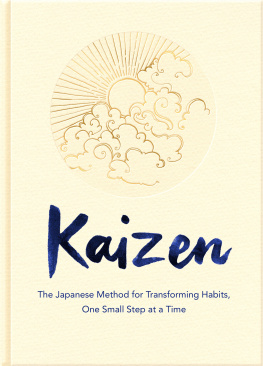
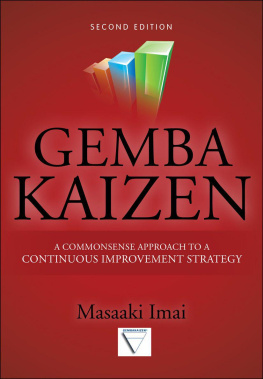





 ost of psychology and medicine is devoted to studying why people get sick or don't function well in life. But throughout my career as a psychologist, I've always been intrigued by the opposite of failure. When a dieter loses ten pounds and keeps it off, I want to know why. If a person finds love after years of unsatisfying relationships, I'm curious about the strategies that made this happiness possible. When a corporation stays on top of its game for fifty years, I want to understand the human decisions behind the success. And so there have been two questions that have occupied my professional life:
ost of psychology and medicine is devoted to studying why people get sick or don't function well in life. But throughout my career as a psychologist, I've always been intrigued by the opposite of failure. When a dieter loses ten pounds and keeps it off, I want to know why. If a person finds love after years of unsatisfying relationships, I'm curious about the strategies that made this happiness possible. When a corporation stays on top of its game for fifty years, I want to understand the human decisions behind the success. And so there have been two questions that have occupied my professional life: hen people want to change, they usually turn first to the strategy of innovation. Although you may usually think of innovation as a type of creative breakthrough, I'm using the term here as it's defined by business schools, where the vocabulary of success and change is highly specific. According to this definition, innovation is a drastic process of change. Ideally, it occurs in a very short period of time, yielding a dramatic turnaround. Innovation is fast and big and flashy; it reaches for the largest result in the smallest amount of time.
hen people want to change, they usually turn first to the strategy of innovation. Although you may usually think of innovation as a type of creative breakthrough, I'm using the term here as it's defined by business schools, where the vocabulary of success and change is highly specific. According to this definition, innovation is a drastic process of change. Ideally, it occurs in a very short period of time, yielding a dramatic turnaround. Innovation is fast and big and flashy; it reaches for the largest result in the smallest amount of time.